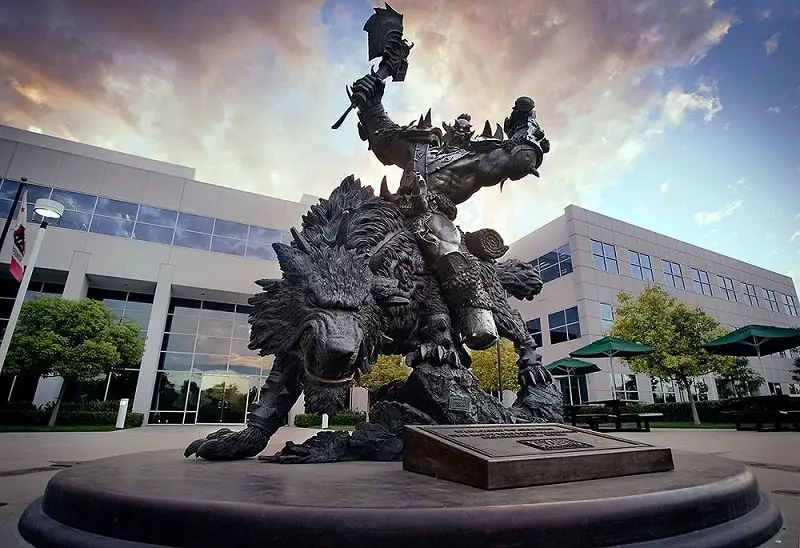Salary, Job Description, How To Become One, and Quiz
.jpg)
Technical Artists
Technical Artists are responsible for adding artwork to video games. They convert art created by other Artists for use as video game assets.
Table of contents
Have you ever wondered how video game developers create 3D objects? The process often involves attaching images created by Artists on a 3D model. Each game may include hundreds of models and digital art files called “assets”. The process of managing these assets is time-consuming and a major part of the video game development process.
Traditionally, Programmers were responsible for mapping digital art to 3D models and game environments. In the past few years, developers have started hiring Technical Artists. Technical Artist is a relatively new role in the video game industry. Here is what you should know about this career.
What they do
Technical Artists are responsible for adding artwork to video games. They convert art created by other Artists for use as video game assets.
Optimize and Convert Completed Art
Technical Artists find ways to create impressive effects and graphics within the limitations of the game engine used to create the game. Modern technology allows video game developers to create photorealistic environments and characters. However, every technology has limits.
Transferring a photo or drawing into a digital asset requires resources. The Technical Artist’s job is to ensure that the art is optimized to achieve the best appearance possible. For example, the Technical Artist may need to reduce the resolution of an image to avoid using too much memory.
A Technical Artist typically maps photos to 3D models and renders the assets. Before the use of Technical Artists, these tasks were performed by the Game Programmers. Hiring Technical Artists reduces some of the work of the Programmers, which gives them more freedom to focus on other tasks.
Develop and Select Tools for Managing Assets
Technical Artists need to understand how to select and develop the tools used for managing assets. Technical Artists often create scripts and tools using C++, Python, and other programming languages. The tools are used to keep track of the assets used in the game and simplify the art-creation pipeline.
Develop Character Systems and Physics Systems
The Lead Technical Artist on a project is typically required to develop the character systems and physics systems used in the game. The character systems influence how characters move and interact with the in-game environment. This may include a rigging system developed by the Technical Artist.
The rigging system is used to create 3D-generated puppets or anchor points. The Technical Artist converts art assets and links them to the 3D models. The physics system controls how objects and people react to each other. A successful physics system provides a balance between realism and entertainment.
For example, in video games with vehicles, players often want a semi-realistic driving experience. However, the Technical Artist also needs to ensure that the vehicle’s movement flows naturally on the screen instead of appearing clunky.
Monitor the Performance of Assets
Making sure that the game engine can support the game assets is one of the most important duties of the Technical Artist. The game engine can only render (display) a limited number of files at one time. Each image consumes memory and processing power.
The Technical Artist monitors assets and adjusts the files for optimal performance. They try to avoid taxing the system too hard to decrease the risk of errors and crashes.
Collaborate with Artists and Programmers
Technical Artists act as a bridge between Programmers and the various Artists who work on video games. On a typical video game project, the Technical Artist works closely with the Creative Director and Lead Artist to understand the direction of the game and develop the workflow for art production.
What is the job like
Pros
You Get to Help Bring Art to Life
Technical Artists help ensure that video game art assets work seamlessly with the programming, which is often a fulfilling process. You get to watch as your creations come to life in the video game.
You Can Enjoy a Casual Work Environment
The work environment inside a typical game studio is somewhat relaxed and casual. You can often wear jeans and a T-shirt and listen to music while you work.
You May Work on Interesting Projects
Technical Artists will work on many projects during their careers, including interesting games in various genres that help keep the job refreshing.
You Often Get to Play Video Games
Technical Artists and other video game professionals get to play the video games that they work on.
Cons
There Is Limited Demand for Technical Artists
Technical Artist is a relatively new role in the video game industry, which can make finding employment a little difficult. Many aspiring Technical Artists need to work as Game Artists or in other industries until a suitable position becomes available.
There Is Pressure to Meet Tight Deadlines
When working in the video game industry, Technical Artists often face tight deadlines and additional pressure that can increase the stress of the job.
Where they work




Technical Artists mostly work for video game developers and publishers. Movie studios have started hiring Technical Artists to assist with computer-generated effects. Technical Artists may use their skills to find employment at software companies. Some graphic design firms also employ Technical Artists.
How to become one
Step 1: Study 3D Graphics Software and Computers
High school students should study computers and the 3D graphics software used by Technical Artists. Practicing 3D drawing can help aspiring Technical Artists gain the foundational skills needed for this career.
Step 2: Study Programming in High School
Students may also want to get a head start on programming as Technical Artists need to know how to write scripts and tools. Common programming languages include Python, Java, and C++.
Step 3: Earn a Bachelor’s Degree
Most Technical Artists have Bachelor’s Degrees. Common majors for Technical Artists include Visual Arts, Graphic Design, Video Game Design, and other technical fields of study.
Step 4: Look for Entry-Level Positions
Employers typically look for candidates with two to five years of work experience in the video game industry. Many Technical Artists start as Programmers or Game Artists as this career combines the skills from both jobs.
Step 5: Maintain a Portfolio
Maintain a portfolio of the projects that you work on. This may include professional projects and personal projects that showcase your technical skills related to 3D art.
Step 6: Apply for Technical Artist Jobs
After working in the industry for at least two years, start applying for Technical Artist positions.
Should you become one
Best personality type for this career
People with this personality likes to work with ideas that require an extensive amount of thinking. They prefer work that requires them to solve problems mentally.
You can read more about these career personality types here.
Technical Artists are often logical and methodical as they need to keep assets within the technical limitations of the game engine. Creativity is also useful for this career as Technical Artists help create the art that players see when they play video games.
Technical Artists should possess good communication skills due to the collaborative nature of this job. Working as a Technical Artist also requires patience as they spend hours per week typing code and rendering assets.
Take this quiz to see if this is the right career for you.
Don’t know which career to pursue?
Take the career quiz to find careers that match your personality type.
Take The Career Quiz
.jpg)
.jpg)
.jpg)
.jpg)
.jpg)
.jpg)
.jpg)
.jpg)
.jpg)
